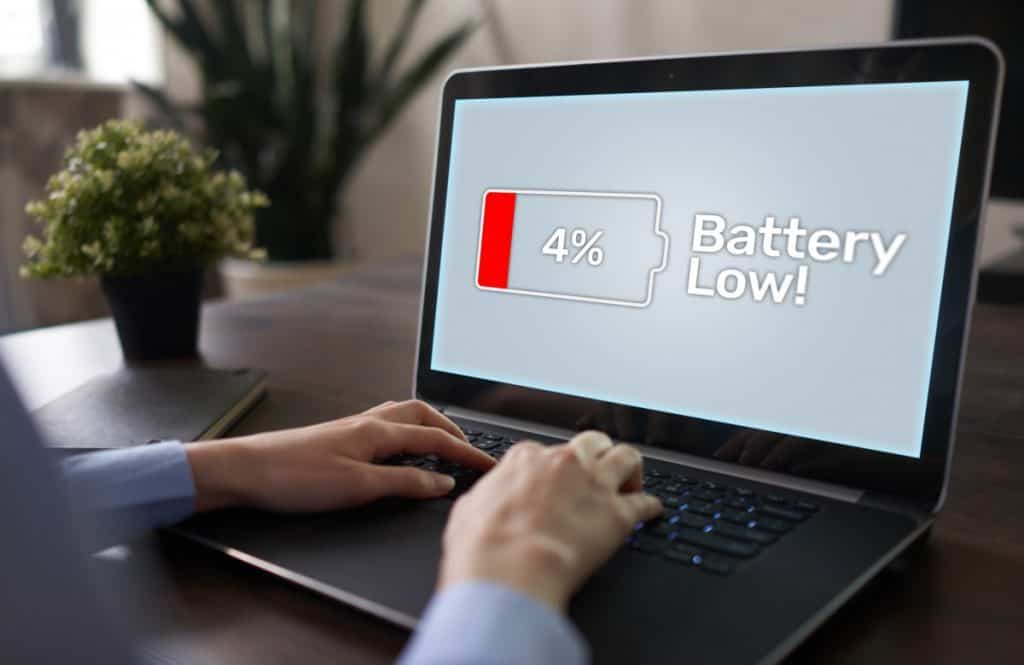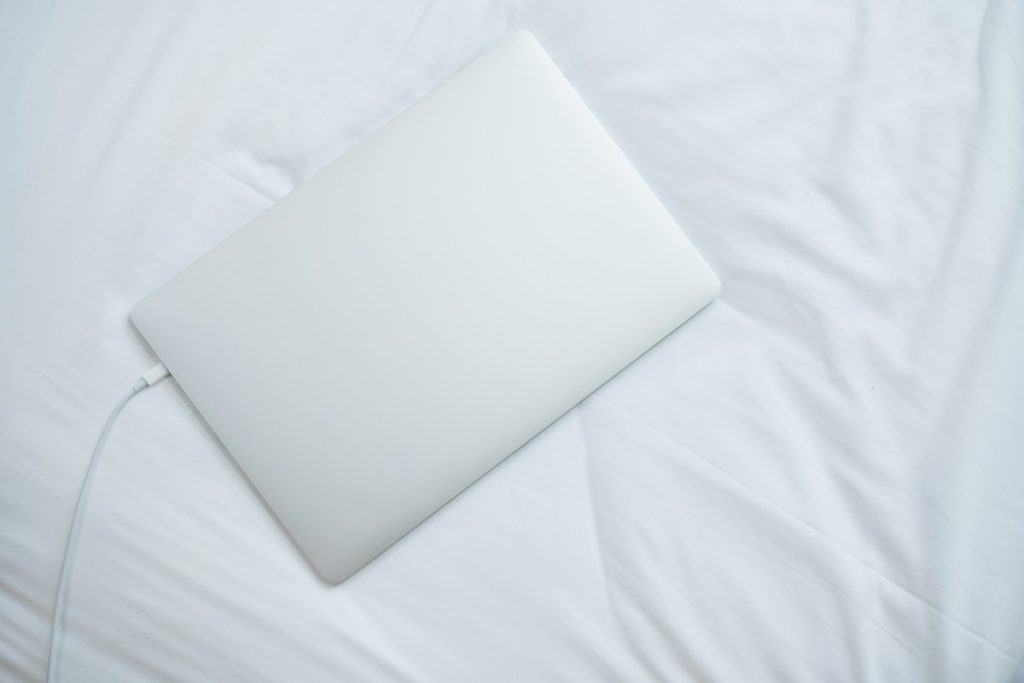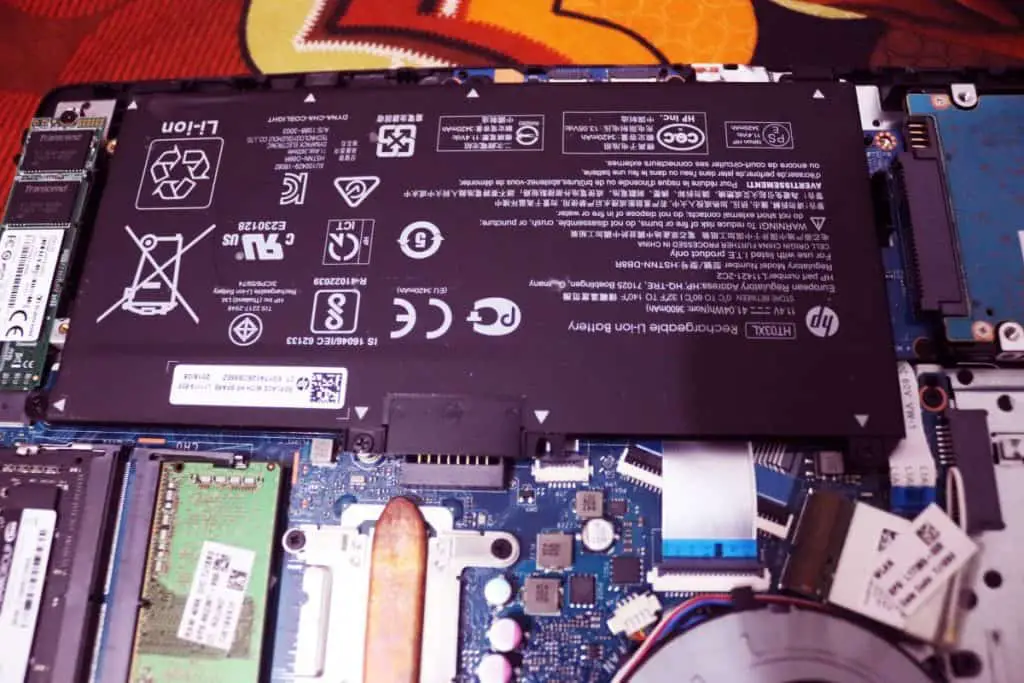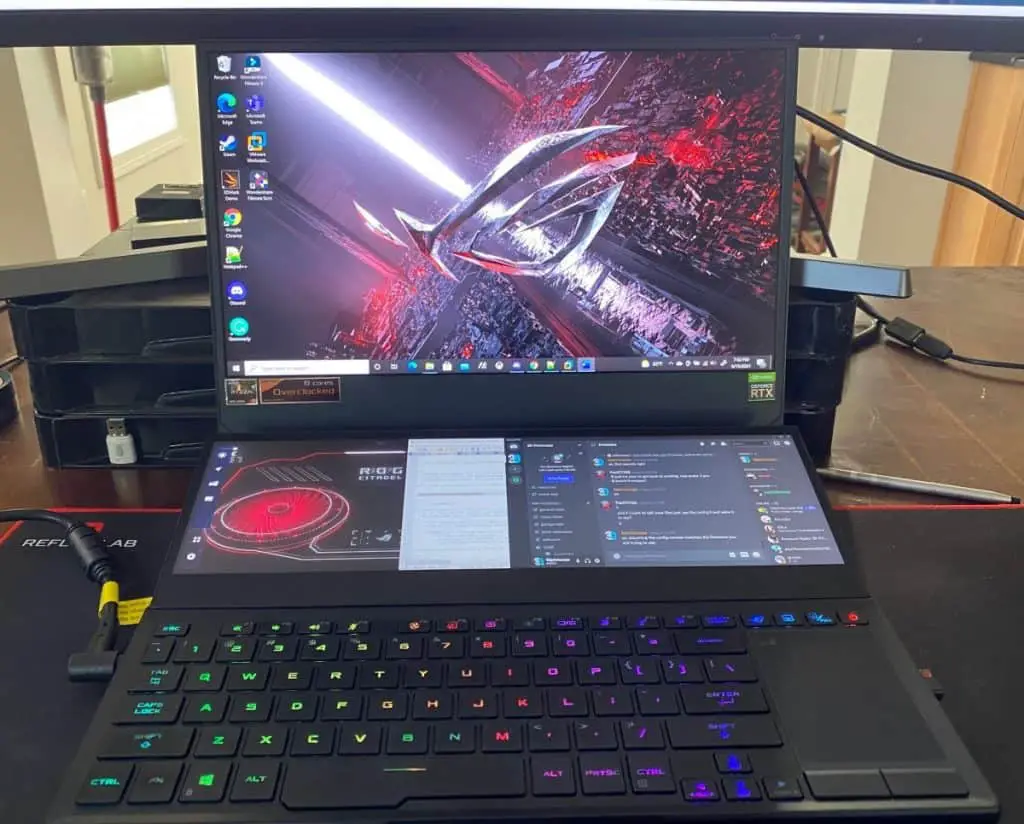These days, there’s lots of talk about mobile phone batteries and charging, but laptop batteries are in a class of their own and deserve attention as well. One of the major differences between laptops and desktops is that laptops have a battery inside. This battery has to be routinely charged so as to power the laptop. You are probably wondering how long it takes to charge a laptop.
Charging times for laptops can vary anywhere from 1.5 hours – 2.5 hours or even higher. It depends on the type, capacity, voltage input, and technology of the battery. The type and power output capacity of charger your laptop has. If you are using the laptop while it’s charging and does it have Fast Charge technology.
In this article, we are going to discuss all that relates to charging a laptop battery. So stay tuned for all we have in store for you. This will certainly be an insightful and enlightening read for you.

Can I Use a Laptop While Charging?
One of the most important components of a laptop is its battery. Most of the time, we tend to only think about things like RAM, monitor size, and CPU power. Laptop batteries often require special care and attention, the lack of which is the reason why most laptop owners have to replace their batteries sooner than they’d prefer.
So it’s only natural for you to wonder whether you can use your laptop while charging. It’s a commonly asked question since no one would like to unknowingly ruin their laptop batteries by using them when charging.
Whenever your laptop is plugged into the wall unit, it is directly powered by the A/C adapter and not the battery. Only excess power goes to the battery. Also, whenever you are plugged in, the battery is not in a state of continuous charging; rather, it gets topped off whenever the charge drops below 95%.
So since the battery is not being used whenever the laptop is not plugged in, it can take several hours for it to naturally lose that 5% without an active drain.
So the short answer is that it is ok to use the laptop when it’s charging.
The long answer, however, is that there are a few caveats.
The laptop battery capacity or the health of the battery drops most when it’s kept fully charged. This usually results in a 20% drop in battery capacity per year. If you use your laptop mostly when it’s plugged in, then you are better off removing the battery altogether; otherwise, you risk ruining it.
Always make sure that your laptop is well ventilated when performing heavy tasks, for example, gaming. This will prevent the battery temperature from getting too high, which may affect battery health.
So even though it’s ok to use your laptop when charging, make sure you don’t do so for prolonged periods of time. This is because prolonged use while charging will make the battery suffer from stress which may ruin it.

What Is the Proper Way To Charge a Laptop?
Laptop owners know that one of the most expensive things to replace is the battery. They require specific voltage and wattage to work, without which the laptop would be susceptible to electrical surges or lack of power.
Not all laptops have removable batteries. Internal cooling fans can also break down after a few years.
Below are some easy and practical tips for charging your laptop which should help maximize your laptop battery’s life:
After charging your laptop, avoid discharging it completely. The best thing you can do is to ensure the battery level remains between 40 percent to 80 percent.
Whenever you are charging your laptop, make sure that it doesn’t get too hot and that the cooling fan is working properly. The best thing you can do if your laptop gets hot when charging is disconnecting it to give the cooling fan time to work.
It is advisable not to leave your laptop plugged into the wall unit all the time. This is because it can significantly reduce the battery’s life.
During intensive use or when performing heavy tasks, do not keep the battery and the A/C adapter plugged in too frequently. This is because it can cause a chemical reaction that may reduce the battery’s capacity to hold a charge. What’s worse is that eventually, the battery won’t hold any charge without having the A/C plugged in.
When the laptop is new or when you insert a new replacement battery, be sure to fully charge it before use.
Wait for the battery level to drop to low levels (though not too low) before recharging. This will significantly increase the likelihood of longer serviceable life.
Never wait for your laptop to die completely before charging it. Doing so affects the capacity and life of your battery.
Consider charging your laptop at a lower voltage if possible.
If you are using your laptop for a prolonged period of time while plugged into a power source, it’s advisable that you remove the battery.
You don’t have to charge the battery to 100%. Batteries that are charged to 100% only have 300-500 recharging cycles. On the other hand, those charged to 80% have nearly quadruple that number of recharging cycles.
All in all, follow these battery charging tips, and your laptop’s battery life will significantly increase.
How Long Does It Take To Charge a Laptop?
How much time it takes for your laptop’s battery to charge fully will depend on several factors, and these include:
- The type of battery your laptop has.
- The capacity of the battery.
- The technology of the battery.
- The type of charger your laptop has.
- Whether or not you use the laptop while it’s charging.
- Whether you have equipped your laptop with Fast Charge technology.
- The total voltage input the battery is receiving from the power source.
- The power output capacity of your laptop’s power adapter.
Some batteries can hold a greater voltage than others, and batteries with a larger voltage will typically take longer to charge.
The other thing that affects charging speed is the type of connector that your laptop charger has. Most laptops will use an A/C adapter to recharge the battery. However, there are other types of laptop chargers that are capable of greater power transfer and, therefore, faster charging. For example, USB-C is an ultra-fast connector that will charge a laptop in a shorter amount of time.
Additionally, if you are using the laptop while charging, it will typically take longer to charge. When you are using the laptop, you are also draining some of the power while it’s being resupplied. This may effectively increase the amount of time it takes to get a full charge.
All things constant, it will typically take 1.5 hours- 2.5 hours for a laptop battery to be fully charged. It all depends on the above factors.
It’s important to note that the charging times can increase or decrease for the same battery depending on the battery’s health and if the laptop is malfunctioning, i.e., having a driver issue, a problem with circuitry, etc.

How Long To Charge Laptop Battery First Time?
Laptop batteries are notorious for losing charge quickly. However, if you treat your battery with the utmost care, you will successfully get the most out of it. This is especially the case when your laptop battery is new.
After purchasing a new laptop battery, it’s recommended to charge the battery for about 24 hours. Charging it for 24 hours makes sure that the battery is full and helps with its life expectancy. Once the battery is full, you should not discharge it fully, at least most of the time.
For the most part, the first charge of your laptop’s battery is its most important. So if you are reading this and have a new laptop or battery, make sure you charge it for 24 hours before you turn it on. This will prolong its life.
Follow these steps to charge your new laptop or new battery effectively for the first time:
- Insert the battery into the battery slot of your laptop. This slot is usually located on the underside or back of your laptop.
- Plug the laptop into the power source and charge to 100%. Usually, laptop batteries come discharged or empty. So you should fully charge it before use. Sometimes, the battery indicator may show 100% after just a few minutes of charging. If this happens, turn your laptop off, remove the battery and attempt to charge it again.
- Discharge the battery fully. Turn on your computer and disconnect it from the power source. Make sure you don’t turn it off until the battery is completely discharged. The laptop should shut down by itself.
- Recharge the battery fully again. After the battery is fully charged, it will have been calibrated once.
- Repeat the above process two or three more times to further calibrate the battery. After this, your laptop battery will then be charged correctly.

At What Percentage Should I Charge My Laptop?
Knowing exactly when to charge your laptop battery is one of the most important parts of owning a laptop. If you get it wrong consistently, the lifespan of your battery can be significantly affected.
You can always keep the battery level as you like, but if you want to maintain the battery life, it’s advisable to ensure that it falls between 40% and 80%.
It, therefore, goes without saying that once the battery level falls below 40%, you should charge it. This will ensure that the battery remains at an optimum level of performance. It’s advisable never to let the laptop shut down completely before you charge it. This can compromise the battery’s lifespan significantly. In the same breath, it’s advisable that you not charge the battery to 100% all the time.
How Do I Know When My Laptop Is Fully Charged?
Believe it or not, but this is a commonly asked question by several laptop owners. It may seem obvious to most of us, but at times, knowing when a laptop is fully charged can be problematic for some people.
In case you had switched off your laptop, switch it back on. Look for the battery icon, which you’ll find at the bottom right of your screen. If your laptop is fully charged, it will indicate fully charged. On other types of laptops, it’s fully charged, the battery icon will disappear (otherwise, it will show the percentage power that your battery has).
If your laptop was off during charging, observe the little light found right next to the charging port. If you notice that the color has changed, that also indicates that the laptop is fully charged.
Is It Bad To Leave Your Laptop Plugged In All the Time?
For the most part, it’s not entirely clear what’s worse for a battery. Maintaining the battery at 100% capacity will decrease its lifespan, but running it through continuous discharge and recharge cycles will also decrease its lifespan. In short, whatever you do, your battery will always wear down and lose its capacity. That’s just how batteries are. However, the real question is whether it’s bad to leave your laptop plugged in all the time.
This is one of those questions that is hard to answer. Here’s why:
Laptop manufacturers all around the world are all over the place when it comes to this question. For example, Apple used to advise MacBook owners against leaving their devices plugged in all the time, but their battery advice page no longer contains this advice. Some PC manufacturers claim that leaving your device plugged in all the time is fine, while others recommend against it for no apparent reason.
If you are concerned about leaving your laptop connected to the power all the time, you may want to put it through a charge cycle just to be on the safe side. Apple used to recommend this tip “to keep battery juices flowing.” Whether this will help will depend on your device and its battery technology. So, all in all, there really isn’t a one-size-fits-all answer on this issue.
In conclusion, the battery is one of the most important components of your laptop. So follow the tips in this guide to ensure you charge it in the right manner. This will ensure its longevity.

